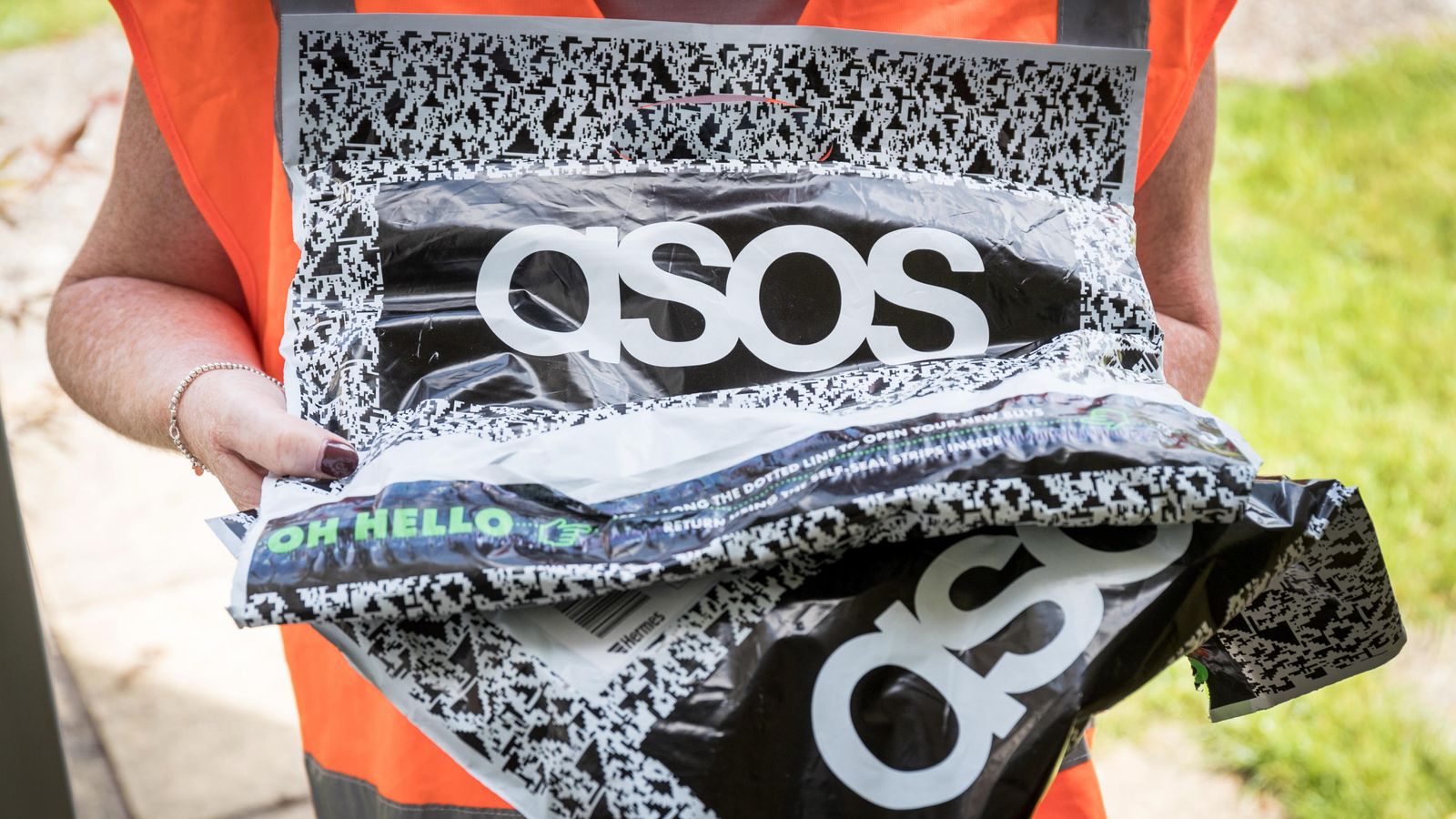ASOS, the online fashion retailer, has reported a 275% leap in half-year profits as it benefits from coronavirus restrictions that have hammered high street rivals.
The company, which snapped up the Topshop, Topman, Miss Selfridge and HIIT brands earlier this year following the collapse of Sir Philip Green’s Arcadia empire, reported a 24% increase in revenue during the six months to 28 February.
The sum came in just shy of £2bn – aided by a 39% rise in the UK and growth in the EU and US of 18% and 16% respectively as much of the world remained mired by intermittent COVID-19 lockdowns.
ASOS said the pandemic drove a 1.5 million rise in its active customer base over the six months, almost hitting 25 million.
It reported an adjusted profit before tax, which included the impact of the deal to give the former Arcadia brands an online-only future, of £112.9m compared to £30.1m in the same period 12 months earlier.
That was despite a 2% hit to profit margins which, ASOS said, was “driven by increased freight costs due to COVID-19 disruption, foreign exchange movements and continued ‘lockdown’ category product mix”.
It calculated that the company had enjoyed a pandemic benefit of £48.5m but warned that sum was likely to unwind as coronavirus restrictions ease and life begins to return to normal.
The company relaunched the Arcadia brands just three weeks after completing the £330m deal, which included unsold stock, and reported “great early customer momentum”.
Only 300 of the 2,500 staff were retained as stores were cast aside.
ASOS was yet to decide whether to reopen the flagship Topshop store in London’s Oxford St – a move, if realised, that would give ASOS its only exposure to physical retail space.
Chief executive Nick Beighton told investors: “The swift integration of the Topshop brands and the impressive early customer engagement is also especially pleasing.
“Looking ahead, while we are mindful of the short-term uncertainty and potential economic consequences of the continuing pandemic, we are confident in the momentum we have built, and excited about delivering on our ambition of being the number one destination for fashion-loving 20-somethings.”
Shares are up 21% in the year to date and by 400% during the pandemic to date.
It likely reflected the fact that the company’s expectations for its full financial year had increased in line with the first-half performance.
It kept the outlook for the second half unchanged – reflecting the fact that its core ’20-somethings’ customer base has proved to be the worst affected by job losses and hits to income during the pandemic.
Official figures have shown that the under-25s make up more than 60% of those to have lost payrolled employment.
Arlene Ewing, investment manager at Brewin Dolphin, said of the performance: “The business is in great shape, with cash on its balance sheet and the acquisition and integration of brands such as Topshop yet to be fully reflected in performance.
“Owning these product ranges will give ASOS greater control over margins and, although they will still require some investment and revival, they could make a meaningful contribution to sales in time.”






















